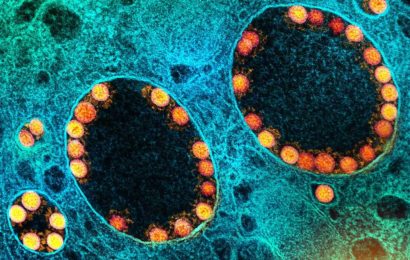Researchers published the study covered in this summary on researchsquare.com as a preprint that has not yet been peer reviewed.
Key Takeaways
-
Patients without known diabetes who had a random blood glucose test in a hospital emergency department (ED) that revealed hyper- or hypoglycemia had worse 30-day and long-term (average 3.9 years) survival and cardiovascular outcomes than did patients with normal blood glucose levels, as found in a large observational study in Sweden.
-
Patients in the hospital ED with hyperglycemia had almost twice the mortality rate during long-term follow-up than did those with normal sugar levels and significantly elevated long-term rates of cardiovascular death, myocardial infarction (MI), stroke, and hospitalization for heart failure after adjustment for potential confounders.
-
Patients with hypoglycemia in their ED visit had a significant 2.5-fold increased rate of all-cause death long-term compared with controls with normal ED glucose levels after adjustment, as well as a significant 2.5-fold elevation of long-term cardiovascular death but did not have significant changes for any other cardiovascular outcome examined.
Why This Matters
-
The results confirm findings from smaller, shorter studies.
-
The findings suggest that random blood glucose measurement in the ED can help identify patients at increased risk for adverse outcomes, and the authors called for controlled studies to test interventions that could potentially improve these outcomes.
Study Design
-
The study used data collected from 622,018 patients aged 18-80 (mean 48 years old, 48% men) who presented to an ED at any one of seven hospitals in Stockholm and Gothenburg, Sweden, between 2006 and 2016 and had no known diabetes (no record of recently filling an antidiabetic-medication prescription).
-
The researchers categorized these people into four groups:
-
Hypoglycemia: random plasma glucose < 3.9 mmol/L (0.3% of patients)
-
Normal glucose: random plasma glucose ≥ 3.9 to < 7.8 mmol/L (85%)
-
Dysglycemia: random plasma glucose ≥ 7.8 to < 11.1 mmol/L (13%)
-
Hyperglycemia: random plasma glucose ≥ 11.1 mmol/L (2%)
-
-
The primary outcome was all-cause mortality; secondary outcomes were cardiovascular mortality, MI, stroke, and hospitalization due to heart failure.
-
During the first 30 days after ED admission:
-
All-cause death occurred in 0.7% of patients. After adjustment for potential confounders, the hazard ratio for all-cause death compared with that with normal glucose levels at ED admission was 9.94 for those with hypoglycemia, 6.92 for those with hyperglycemia, and 2.18 for those with dysglycemia, all significant differences.
-
Cardiovascular mortality occurred in 0.3% of patients. After adjustment, the hazard ratio compared with that in normoglycemic patients was 15.22 in those with hyperglycemia, 4.81 in those with hypoglycemia, and 2.98 in those with dysglycemia, all significant differences.
-
The rates of MI, stroke, and hospitalization for heart failure were 2- to 3.4-fold higher in patients with hyperglycemia and 1.2-1.7 times higher in patients with dysglycemia than in patients with normal glucose, all significant differences. The rates of these cardiovascular outcomes were not significantly different among patients with hypoglycemia compared with those with normoglycemia.
-
-
During long-term follow-up beyond 30 days, for an average of 3.9 years and a maximum of 9 years:
-
All-cause death occurred in 7.3% of patients. The hazard ratio for the rate of all-cause mortality after adjustment and relative to those with normoglycemia was 2.51 in patients with hypoglycemia, 1.87 in patients with hyperglycemia, and 1.23 in patients with dysglycemia, all significant differences.
-
Cardiovascular mortality occurred in 1.6% of patients. The hazard ratio for the rate of cardiovascular mortality after adjustment for potential confounders and compared with the normoglycemic group was 2.54 for those with hypoglycemia, 2.51 for those with hyperglycemia, and 1.25 for those with dysglycemia, all significant differences.
-
The rates for MI, stroke, and hospitalization for heart failure were 1.6- to 2.3-fold higher in patients with hyperglycemia compared with those with normoglycemia and 1.1- to 1.4-fold higher in patients with dysglycemia, all significant differences. Those with hypoglycemia had rates that did not differ significantly from those with normoglycemia.
-
The analysis focused on glucose levels at the time of hospital admission, with no information available about subsequent glycemia status.
-
The study did not include information on treatments received by the study participants following their index ED admission.
-
This was an observational study and hence may be subject to unmeasured, residual confounding.
-
The study did not receive commercial funding.
-
One author has received unrestricted grants from AstraZeneca and Novo Nordisk and has served on advisory boards for Abbot, Amgen, Boehringer Ingelheim, Eli Lilly, Novo Nordisk, and Sanofi-Aventis. The other authors had no financial disclosures.
Limitations
Disclosures
This is a summary of a preprint research study “Admission Glucose as a Prognostic Marker for All-Cause Mortality and Cardiovascular Disease” written by researchers at Karolinska Institute, Stockholm, Sweden, on Research Square provided to you by Medscape. This study has not yet been peer reviewed. The full text of the study can be found on researchsquare.com.
Follow Medscape on Facebook, Twitter, Instagram, and YouTube
Source: Read Full Article
-


